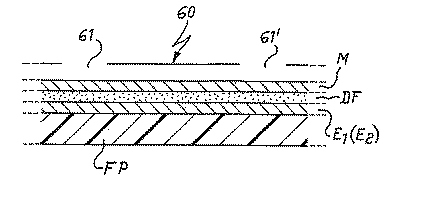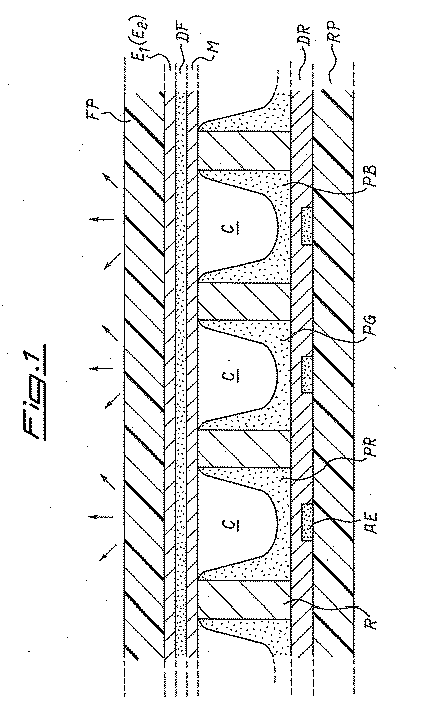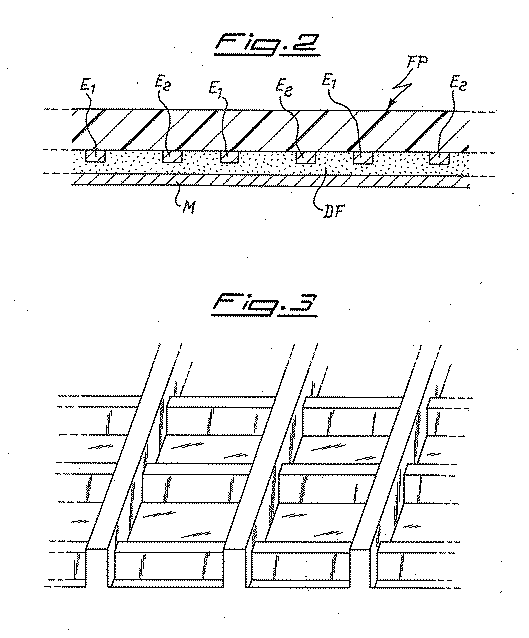Process for the Production of Plasma Displays with Distributed Getter Material and Displays Thus Obtained
a technology of getter material and plasma display, which is applied in the manufacture of electrode systems, discharge tubes luminescnet screens, gas mixture absorption, etc., can solve the problems of deteriorating image quality, no longer being able to evacuate cells or fill, and water being regarded as the most dangerous impurity, etc., and achieves the effect of simple manufacturing process
- Summary
- Abstract
- Description
- Claims
- Application Information
AI Technical Summary
Benefits of technology
Problems solved by technology
Method used
Image
Examples
Embodiment Construction
[0026] The FIGS. 1 to 5 have been described in the Background section above.
[0027] The process of the invention is different from the known processes only in that the manufacturing of the front glass panel comprises the steps of forming a number of getter deposits on the surface, that in the finished display is facing the inner space, at locations essentially corresponding to the contact areas with the upper portion of the ribs. The getter deposits may be formed either on the plane surface of the MgO layer (M in FIG. 1) or into recesses formed in this layer. The invention is applicable indifferently to either pumping tabulation or in chamber manufacturing processes of PDPs.
[0028]FIG. 6 shows the various steps of the operation characterizing the invention in a first embodiment (in this drawing, the front glass panel is shown upside down with respect to FIGS. 1-5). During step a, above the surface of the magnesium oxide layer onto which the getter deposits are to be formed, a mask 6...
PUM
| Property | Measurement | Unit |
|---|---|---|
| width | aaaaa | aaaaa |
| width | aaaaa | aaaaa |
| temperatures | aaaaa | aaaaa |
Abstract
Description
Claims
Application Information
 Login to View More
Login to View More - R&D
- Intellectual Property
- Life Sciences
- Materials
- Tech Scout
- Unparalleled Data Quality
- Higher Quality Content
- 60% Fewer Hallucinations
Browse by: Latest US Patents, China's latest patents, Technical Efficacy Thesaurus, Application Domain, Technology Topic, Popular Technical Reports.
© 2025 PatSnap. All rights reserved.Legal|Privacy policy|Modern Slavery Act Transparency Statement|Sitemap|About US| Contact US: help@patsnap.com



